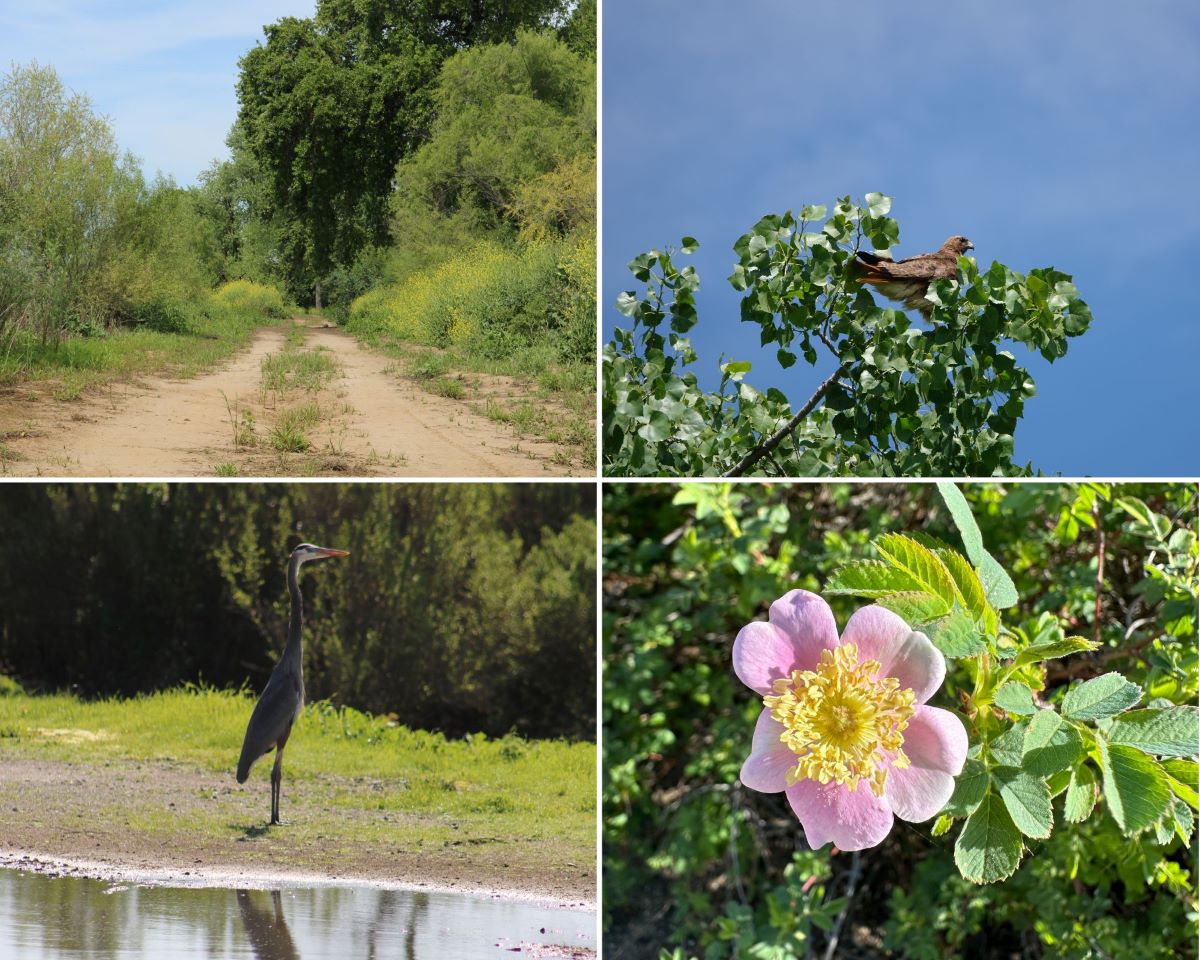California State Parks Opens Two New Self-Guided Trails at Dos Rios
Contact:
Newsroom@parks.ca.gov
California’s newest park expands access to the confluence of the San Joaquin and Tuolumne rivers

The San Joaquin River from the new Confluence Trail at Dos Rios. Photo from California State Parks.
MODESTO — Just in time for the Thanksgiving holiday, visitors can start exploring two new trails at Dos Rios, California’s newest state park in the Central Valley. Starting Friday, Nov. 29, the Pond Loop and Confluence trails will be open from 7 a.m. to 5 p.m. on weekends (Friday to Sunday).
Dos Rios opened to the public on June 12 and is located about 8 miles west of Modesto. The approximately 1,600-acre Dos Rios property is the largest public-private floodplain restoration project in California history, restoring habitat for threatened and endangered wildlife at the confluence of the Tuolumne and San Joaquin rivers, among other benefits.
Here are more details about the new trails:
- The Pond Loop Trail is a 1.85-mile self-guided loop with a quarter-mile section of accessible trail. The trail is mostly flat with views of wildlife, ancient oak trees and a newly restored floodplain forest.
- The Confluence Trail is a 3.6-mile self-guided out-and-back route on mostly flat ground to the confluence of the San Joaquin and Tuolumne rivers. Visitors can pick up a self-guided brochure at the welcome center to learn more about the trail’s features, such as the newly restored floodplain forest, the Native Use Garden and the “bunny mound,” which provides shelter for the endangered Riparian brush rabbit during flooding.
- No services are provided so visitors are encouraged to plan ahead with appropriate food and water, bringing all trash back to the day-use area known as Base Camp.
Some additional information on Dos Rios:
- Hiking and picnicking: Besides the two new trails, visitors can enjoy newly built picnic tables and ramadas.
- Bird watching: Dos Rios is a key destination for birds migrating along the Pacific Flyway and is home to some incredible bird species. Bring your binoculars and see how many species you can locate.
- Engaging with an interpreter: Would you like to learn more about the area and how the floodplain forest protects people and animals? Speak with a park guide to learn all there is to know about this special park.
- Park hours: Dos Rios is open Friday to Sunday, from 7 a.m. to 5 p.m. Special events, guided backcountry hikes, and guided tours will be available on ReserveCalifornia.com and at parks.ca.gov/DosRios. Dos Rios is located at 3599 Shiloh Road, Modesto, CA 95358.
- Pet-friendly? Dogs are welcome in the Base Camp (day-use area) and on the two trails. They must be on a leash no longer than 6 feet long. Please bring water for your dog and pick up and pack out any waste, as no trash services are provided on the trails.
The opening of these two trails marks continued growth for the new park. Planning for greater river access for swimming, camping, angling, boating, and other water sports, along with trails for bicycling and other outdoor recreation activities, will involve a public engagement process that includes consultation with area Tribes. As part of the planning process, the official name and park classification of Dos Rios will soon be determined and approved by the California State Park and Recreation Commission.

Top left: The new Pond Loop Trail at Dos Rios. Top right: A red-tailed hawk. Bottom left: Great blue heron.
Bottom right: California wildrose. Photos from California State Parks.

Map of Dos Rios showing the two new trails – Pond Loop and Confluence.
###
Subscribe to California State Parks News via e-mail at NewsRoom@parks.ca.gov
California State Parks provides for the health, inspiration and education of the people of California by helping to preserve the state’s extraordinary biological diversity, protecting its most valued natural and cultural resources, and creating opportunities for high quality outdoor recreation.
